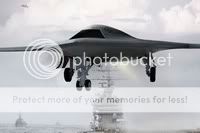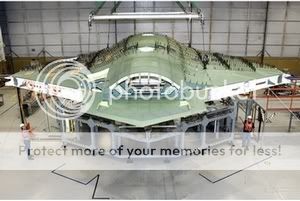It looks like you're using an Ad Blocker.
Please white-list or disable AboveTopSecret.com in your ad-blocking tool.
Thank you.
Some features of ATS will be disabled while you continue to use an ad-blocker.
0
share:
Website
Northrop ISWR needed this contract congrats to all involved. It will be real exciting to see this platform develop. Good luck to the the Air Force and their Reaper, I think the Navy out did them this time.
Thoughts?
NAVY
Northrop Grumman Systems Corp., Integrated Systems - Western Region, San Diego, Calif., is being awarded a $635,860,599 cost-plus-incentive-fee contract for the Unmanned Combat Air System CV Demonstration Program (UCAS-D).The purpose of the UCAS-D is to demonstrate critical CV suitability technologies for a low observable platform air vehicle in a relevant environment.Expected deliverables include trade studies, analyses, software, reports and flight test data.Work will be performed in Rancho Bernardo, Calif. (38 percent); El Segundo, Calif. (29 percent); Palmdale, Calif. (13 percent); East Hartford, Conn. (7 percent); Jupiter, Fla. (2 percent); Nashville, Tenn. (2 percent); Hazelwood, Mo. (1 percent), and various locations within the United States (8 percent), and is expected to be completed in September 2013Contract funds will not expire at the end of the current fiscal year.This contract was competitively procured through a request for proposals; two firms were
solicited and two offers were received.The Naval Air Systems Command Patuxent River, Md. is the contracting activity (N00019-07-C-0055).
Northrop ISWR needed this contract congrats to all involved. It will be real exciting to see this platform develop. Good luck to the the Air Force and their Reaper, I think the Navy out did them this time.
Thoughts?
The Navy might yet still select the Mariner (naval version of the Reaper) for their BAMS program. Still, congratulations to Northrop for an excellent
design which promises to add new capability to the USN.
Well, looks like I called that one right -
N-UCAS Contract - News?
The Northrop design was so ingrained into the Navy brass thanks to the old J-UCAS days that Boeing really never had a chance.
Boeing had virtually all of their eggs in the USAF basket and the AF screwed them by withdrawing from the J-UCAS program.
I'm thinking this will revitalize Northrop's aerospace division after the F-23 lost out to the F-22. Northrop has lost some great engineers over the last few years, I hope this brings some of them back.
N-UCAS Contract - News?
The Northrop design was so ingrained into the Navy brass thanks to the old J-UCAS days that Boeing really never had a chance.
Boeing had virtually all of their eggs in the USAF basket and the AF screwed them by withdrawing from the J-UCAS program.
I'm thinking this will revitalize Northrop's aerospace division after the F-23 lost out to the F-22. Northrop has lost some great engineers over the last few years, I hope this brings some of them back.
Originally posted by intelgurl
I'm thinking this will revitalize Northrop's aerospace division after the F-23 lost out to the F-22. Northrop has lost some great engineers over the last few years, I hope this brings some of them back.
Hope your right. Its great to know that this will help out Northrop getting back into the frey. Can't wait till we see carrier trials in the coming years.
Well here is some images and a pictures that have been released of the current version of the UCAS.



Also some more info from flight global on the win.
Good news all around and lets hope that Northrop hits this one out of the park while staying on target and on budget. Oh and here is some interesting reading for anyone interested. www.csbaonline.org...
[edit on 22/08/06 by Canada_EH]



Also some more info from flight global on the win.
The Unmanned Combat Air System – Demonstrator (UCAS—D), is a six-year project that calls for proving carrier operations with the X-47B starting in 2011. The USN currently plans to make a decision after 2013 on a potential follow-on acquisition programme for a long-range strike fleet.
"This specific contract is for technology development and demonstration and will not be an operational system," said Navy Capt. Rich Brasel, program manager for NAVAIR’s technology demonstration effort. "But through it, we will develop knowledge, skills and technologies specific to operating an autonomous low-observable unmanned air vehicle in an aircraft carrier environment."
However, concerns remain that the USN may lose interest in the programme as resources for shipbuilding and other aviation accounts becomes scarce.
Good news all around and lets hope that Northrop hits this one out of the park while staying on target and on budget. Oh and here is some interesting reading for anyone interested. www.csbaonline.org...
[edit on 22/08/06 by Canada_EH]
new topics
-
If they can see...they can read!!
Rant: 6 hours ago
top topics
-
Tesla Cybertruck Explodes in Front of Trump Hotel in Las Vegas
Mainstream News: 12 hours ago, 19 flags -
If they can see...they can read!!
Rant: 6 hours ago, 6 flags -
Maybe they didn't get away with it: The Lincoln-Kennedy assassination parallels. 7 sentences long.
History: 14 hours ago, 4 flags
0
